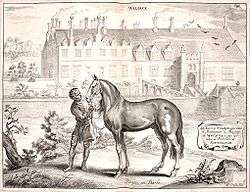Abraham van Diepenbeeck

Abraham van Diepenbeeck (9 May 1596 (baptised) - May-Sept. 1675) was an erudite and accomplished Dutch painter of the Flemish School.
Biography

Van Diepenbeeck was baptised in 's-Hertogenbosch. After having received a classical education, he became a pupil and assistant of Peter Paul Rubens. He handled mythological and historical subjects, as well as portraits, with great skill and vigor and was a good, sound colourist. He went to Antwerp about 1629 and made his first successes in painting on glass, among his productions being windows in the cathedral there representing the "Acts of Mercy". Similar work at the church of the Dominicans shows scenes from the "Life of Saint Paul". Van Diepenbeek was admitted to the guild of painters in 1638, and became director of the academy in 1641. It was after a visit to Italy that the artist began to paint chiefly in oil and to illustrate. Among his illustrations are fifty-eight designs engraved by Cornelis Bloemaert for the Abbe de Marolles' "Tableaux du Temple des Muses". During the reign of Charles I of England, van Diepenbeeck was in England where, besides painting portraits of the first Duke of Newcastle and his family, the artist illustrated that nobleman's book on "Horsemanship". He died, aged 79, in Antwerp.
Notes
References
 Herbermann, Charles, ed. (1913). "Abraham van Diepenbeeck". Catholic Encyclopedia. New York: Robert Appleton Company.
Herbermann, Charles, ed. (1913). "Abraham van Diepenbeeck". Catholic Encyclopedia. New York: Robert Appleton Company.
External links
| Wikimedia Commons has media related to Abraham van Diepenbeeck. |
| Wikisource has the text of the 1911 Encyclopædia Britannica article Diepenbeeck, Abraham van. |
- Artcyclopedia entry
- Diepenbeeck at the Netherlands Inst. for Art History
 "Diepenbeeck, Abraham van". Encyclopedia Americana. 1920.
"Diepenbeeck, Abraham van". Encyclopedia Americana. 1920.